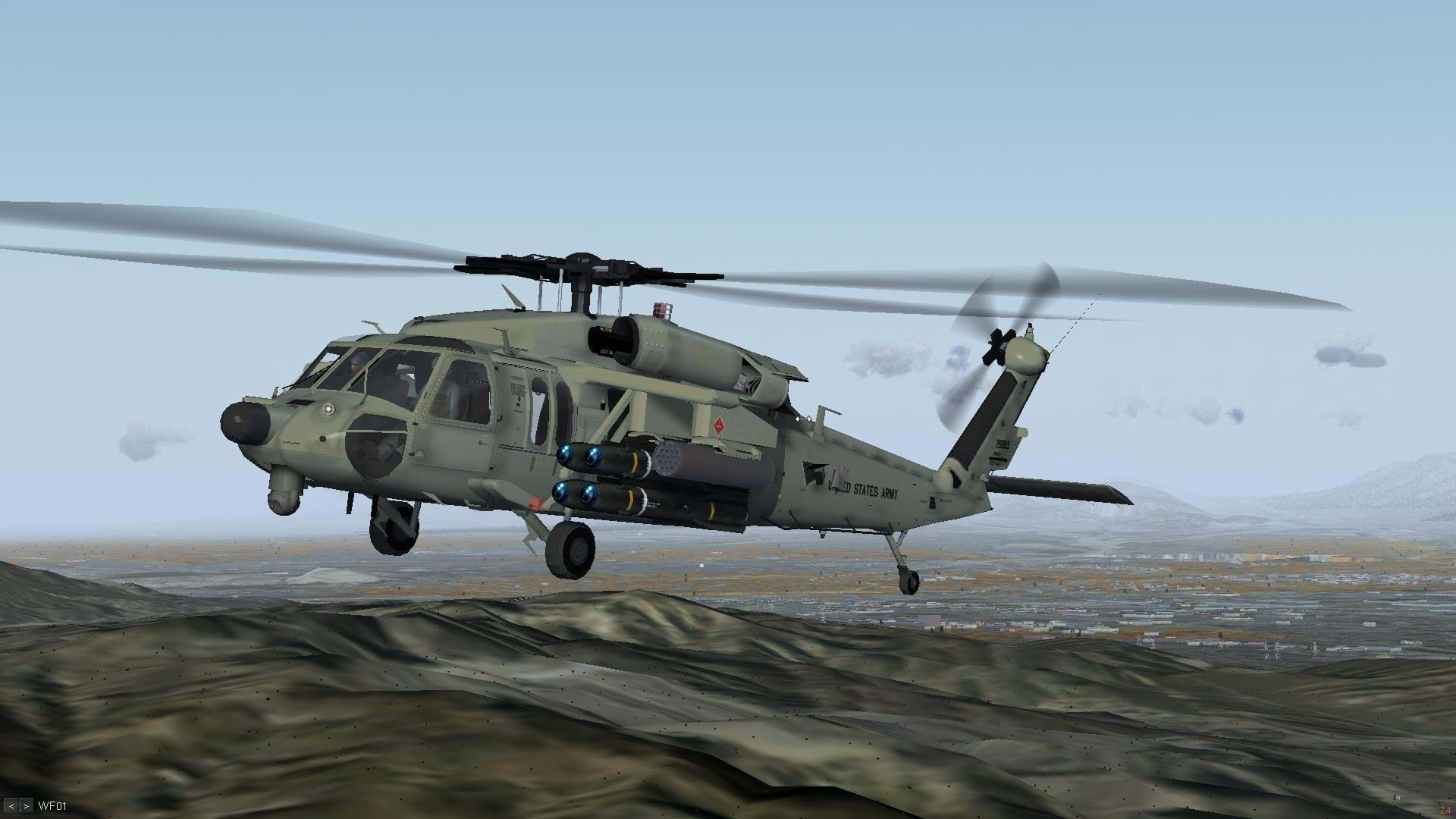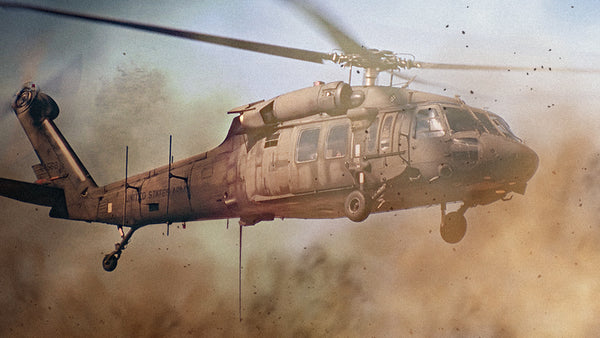The Advancement Proceeds: UH-60 Upgrades and Future Dope Revealed
The Advancement Proceeds: UH-60 Upgrades and Future Dope Revealed
Blog Article
Introducing the Key Features and Abilities of the UH-60 Helicopter
The UH-60 helicopter stands as a testament to the advancement and design expertise of its designers. With its streamlined style and effective engine, it has the capacity to browse with the most treacherous terrains. Yet what absolutely establishes this helicopter apart are its innovative avionics and navigation systems, guaranteeing precision and precision in every goal. Its flexibility knows no bounds, as it easily transitions between various roles, from army transportation to clinical emptying. And let's not forget its protective systems, designed to take full advantage of survivability in hostile environments. As we dive deeper into the essential functions and abilities of the UH-60 helicopter, prepare to be amazed by its exceptional performance and the myriad of opportunities it gives the table.
Engine and Performance
The UH-60 helicopter flaunts an impressive engine and efficiency, showcasing its capacities in various objective circumstances. Furnished with 2 General Electric T700-GE-701D turboshaft engines, each producing 1,994 horse power, the UH-60 can reaching an optimum speed of 183 knots (333 km/h) and a variety of 363 maritime miles (673 kilometres) This degree of power guarantees the helicopter's dexterity and speed, allowing it to steer swiftly in vital scenarios.
Furthermore, the UH-60's engines are designed to offer remarkable power-to-weight proportion, enabling the helicopter to bring an optimum outside lots of 9,000 pounds (4,082 kg) This payload ability makes it suitable for transferring soldiers, devices, and supplies, making the UH-60 a reputable possession in fight and disaster relief operations.
In terms of efficiency, the UH-60 includes innovative innovations and features to boost its ability to move and security. Its four-bladed primary blades system, coupled with a four-bladed tail blades, provides extraordinary lift capacity and accurate control, making sure smooth and stable flight also in difficult atmospheres.
In Addition, the UH-60's engine is outfitted with an automated trip control system, which assists the pilots in maintaining optimum trip parameters, reducing pilot workload and enhancing safety. With its durable engine and remarkable efficiency, the UH-60 helicopter is a functional and trusted system for completing a wide variety of missions.
Avionics and Navigation Equipment
Avionics and navigating systems play a critical function in ensuring the UH-60 helicopter's operational effectiveness and safety and security. These systems are in charge of offering the pilots with important information and tools to browse with different trip conditions and terrains.
The UH-60 helicopter is equipped with sophisticated avionics systems that boost situational understanding and enable precise navigating. One of the key functions is the Integrated Avionics Collection (IAS), which includes a digital map screen, a trip management system, and a data transfer system.
In enhancement to the IAS, the UH-60 helicopter is geared up with a navigating system that makes use of different sensors, such as GPS, inertial navigation systems, and Doppler radar - uh-60. These sensing units interact to offer exact and reliable positioning, velocity, and altitude information, even in difficult weather or GPS-denied atmospheres

Furthermore, the UH-60 helicopter is geared up with a Traffic Collision Avoidance System (TCAS) and a Terrain Awareness and Caution System (TAWS) The TCAS notifies the pilots to potential aircraft collisions and offers assistance to prevent them, while the TAWS alerts the pilots of prospective terrain threats and gives terrain avoidance assistance.
Objective Capabilities and Convenience
With its innovative avionics and navigating systems making sure operational effectiveness and safety and security, the UH-60 helicopter showcases exceptional objective capabilities and convenience. Designed to fulfill the needs of various goals, the UH-60 can carrying out a broad range of jobs, making it a vital possession to armed forces operations worldwide.
Among the vital objective capabilities of the UH-60 is its capacity to carry out army transportation. With a sizable cabin and seating for up to 11 combat-equipped soldiers, the helicopter can rapidly deliver employees to and from the field of battle. This capability makes it possible for fast and efficient implementation of troops, improving functional flexibility and responsiveness.
In enhancement to army transportation, the UH-60 excels in casualty emptying (CASEVAC) missions. Furnished with medical devices and cots, the helicopter can give essential medical assistance to injured employees. Its ability to swiftly evacuate casualties from remote or hazardous places can significantly enhance the opportunities of survival and reduce the time it requires to get clinical treatment.
Furthermore, the UH-60 is appropriate for search and rescue (SAR) operations. Furnished with innovative sensing units and interactions systems, the helicopter can quickly locate and draw out individuals in distress, whether on land or mixed-up. Its convenience in different atmospheres and weather condition problems makes it a reputable possession for SAR objectives.
Moreover, the UH-60 can be equipped with numerous tool systems, enabling it to offer close air support and involve targets on the ground. This ability improves the helicopter's effectiveness in battle circumstances and strengthens its role as a multi-purpose system.
Defensive Equipments and Survivability
Enhancing its capability to stand up to threats and ensure the safety and security of its crew, the UH-60 helicopter is equipped with innovative protective systems and survivability functions. These systems are created to secure the aircraft and its occupants from a large range of prospective dangers run into during armed forces operations.
Among the essential defensive systems on the UH-60 is the Common Missile Warning System (CMWS) This system discovers and tracks incoming missiles, giving the team with prompt notifies and enabling them to take ideal evasive actions. Additionally, the helicopter is outfitted with a sophisticated infrared countermeasures system, which can jam the guidance systems of heat-seeking rockets, boosting the aircraft's chances of survival.
To additionally boost survivability, the UH-60 includes a crashworthy structure and seats system. This layout is intended to reduce the threat of injuries to the crew in case of a collision or tough touchdown. In addition, the helicopter is furnished with self-sealing fuel storage tanks, which can aid avoid fuel leakages and fires in case of a hit.
Another secret feature contributing to the UH-60's survivability is its repetitive flight control system - uh-60. This system supplies back-up controls in case the primary Click This Link system fails, enabling the pilot to keep control of the airplane and safely land it
Maintenance and Assistance Needs
The UH-60 helicopter needs routine maintenance and support to guarantee its optimal performance and functional readiness. As a complicated aircraft, it is important to stick to an organized maintenance program to find and rectify any potential issues. The maintenance demands for the UH-60 include arranged assessments, preventative upkeep, and repair services. These tasks are executed by trained upkeep workers that comply with stringent guidelines and procedures outlined by the producer.
Routine inspections are conducted to assess the total problem of the helicopter and recognize any kind of indicators of deterioration. This consists of inspecting the engines, rotor systems, avionics, and various other critical parts. Preventative maintenance tasks, such as lubricating relocating components, changing filters, and inspecting electric systems, are additionally executed to protect against devices failing and make sure the helicopter's dependability.
In addition to routine maintenance, the UH-60 calls for recurring support in terms of logistics and extra parts monitoring. A robust supply chain is necessary to guarantee the availability of extra components, devices, and equipment needed for repair like it and maintenance. This includes correct stock management, purchase, and control between upkeep units and distributors.
To support the UH-60 fleet properly, a detailed upkeep and support facilities is developed. This consists of upkeep facilities, training programs for maintenance workers, and technological support from the supplier. The goal is to decrease downtime and make sure that the helicopters are constantly in a state of functional readiness, ready to fulfill their mission demands.
Verdict
To conclude, the UH-60 helicopter is an amazing airplane with remarkable engine efficiency, advanced avionics and navigation systems, and flexible goal capabilities. Its defensive systems boost survivability, making it a reputable selection in various operational circumstances. It is vital to keep in mind that the UH-60 additionally requires routine upkeep and assistance to guarantee its continued operational efficiency. In general, the UH-60 helicopter stands as a very qualified and reputable aircraft in armed forces and noncombatant applications.

To published here better improve survivability, the UH-60 includes a crashworthy structure and seats system.In final thought, the UH-60 helicopter is a remarkable airplane with impressive engine efficiency, progressed avionics and navigating systems, and functional mission capacities.
Report this page